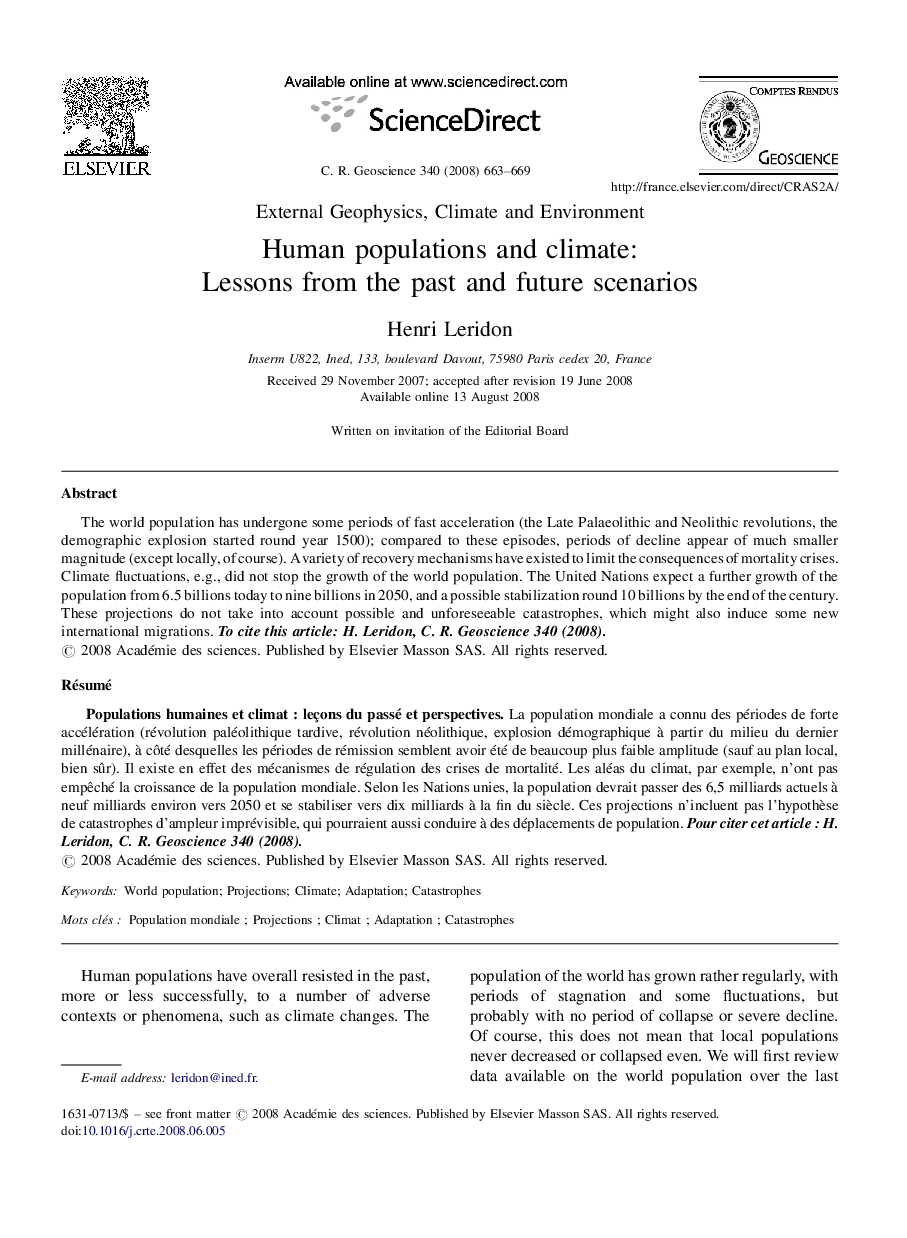| Article ID | Journal | Published Year | Pages | File Type |
|---|---|---|---|---|
| 4462765 | Comptes Rendus Geoscience | 2008 | 7 Pages |
The world population has undergone some periods of fast acceleration (the Late Palaeolithic and Neolithic revolutions, the demographic explosion started round year 1500); compared to these episodes, periods of decline appear of much smaller magnitude (except locally, of course). A variety of recovery mechanisms have existed to limit the consequences of mortality crises. Climate fluctuations, e.g., did not stop the growth of the world population. The United Nations expect a further growth of the population from 6.5 billions today to nine billions in 2050, and a possible stabilization round 10 billions by the end of the century. These projections do not take into account possible and unforeseeable catastrophes, which might also induce some new international migrations.
RésuméPopulations humaines et climat : leçons du passé et perspectives. La population mondiale a connu des périodes de forte accélération (révolution paléolithique tardive, révolution néolithique, explosion démographique à partir du milieu du dernier millénaire), à côté desquelles les périodes de rémission semblent avoir été de beaucoup plus faible amplitude (sauf au plan local, bien sûr). Il existe en effet des mécanismes de régulation des crises de mortalité. Les aléas du climat, par exemple, n’ont pas empêché la croissance de la population mondiale. Selon les Nations unies, la population devrait passer des 6,5 milliards actuels à neuf milliards environ vers 2050 et se stabiliser vers dix milliards à la fin du siècle. Ces projections n’incluent pas l’hypothèse de catastrophes d’ampleur imprévisible, qui pourraient aussi conduire à des déplacements de population.
